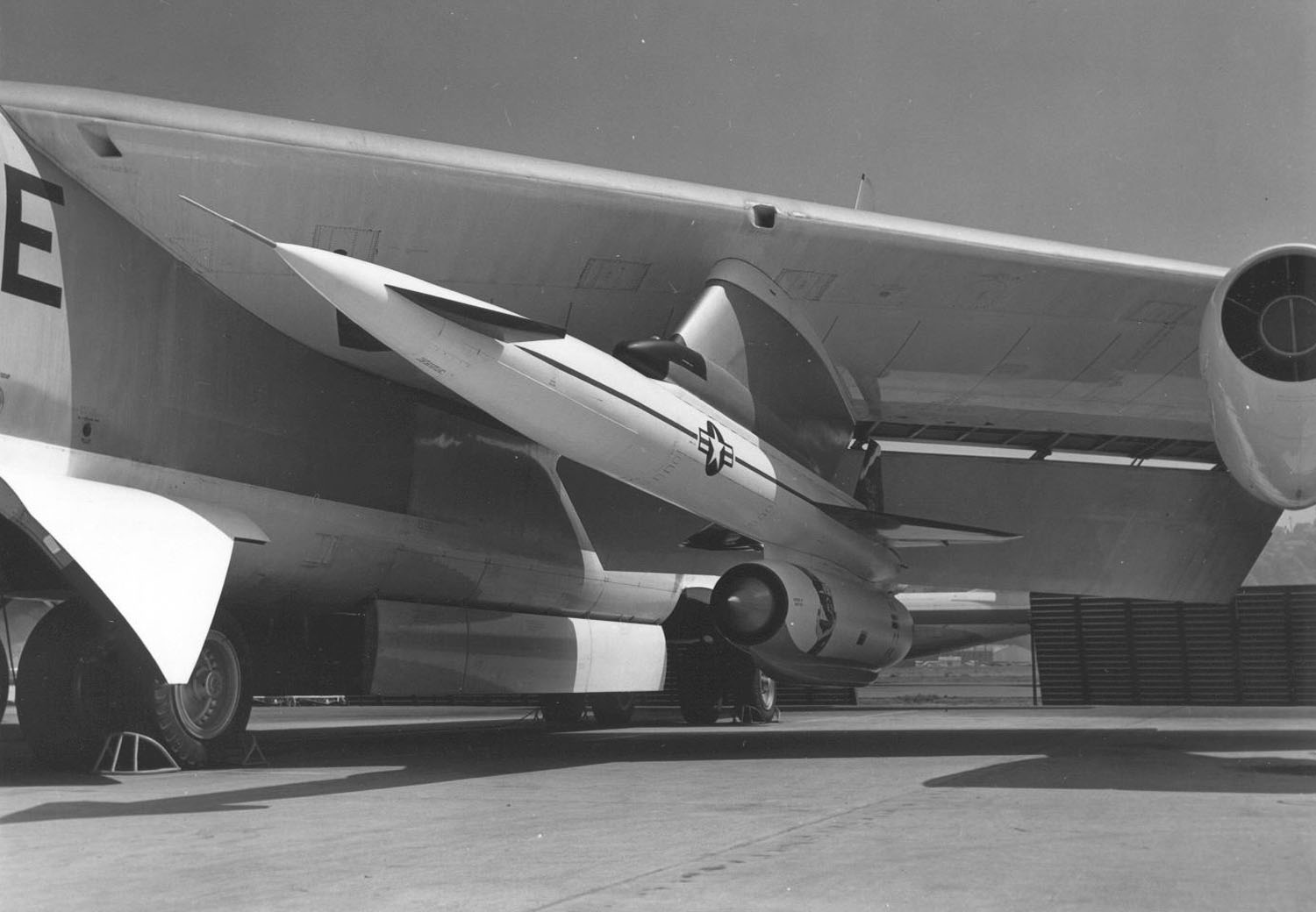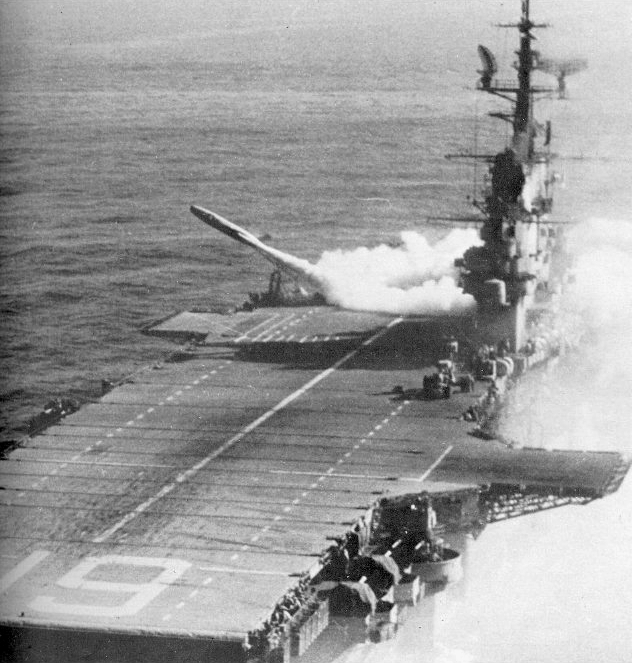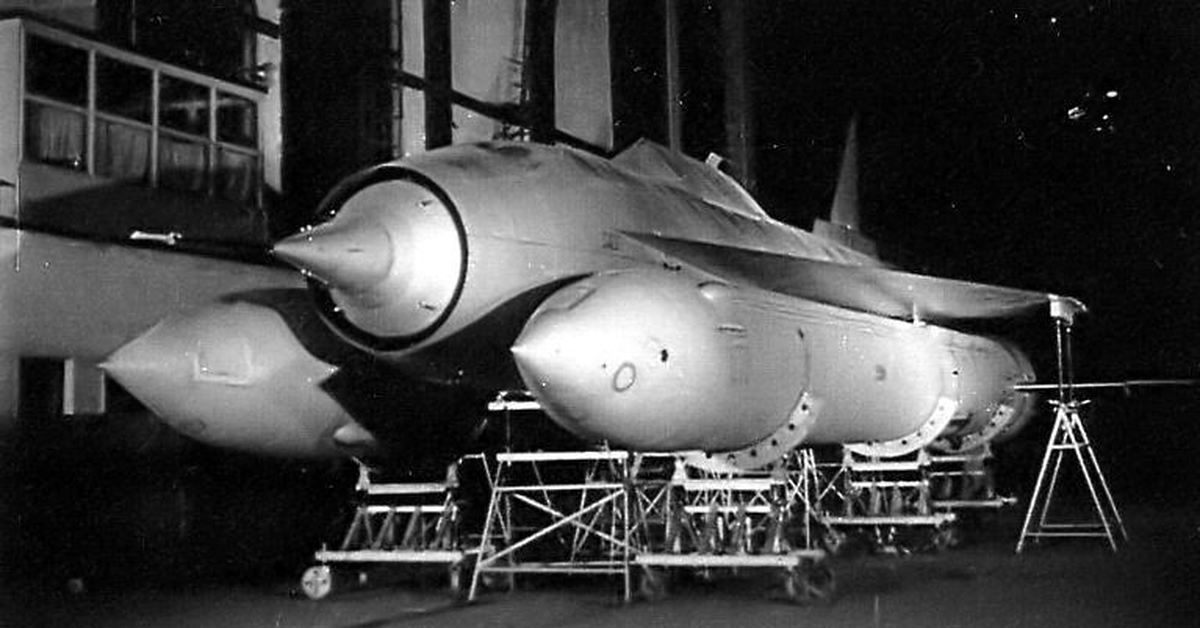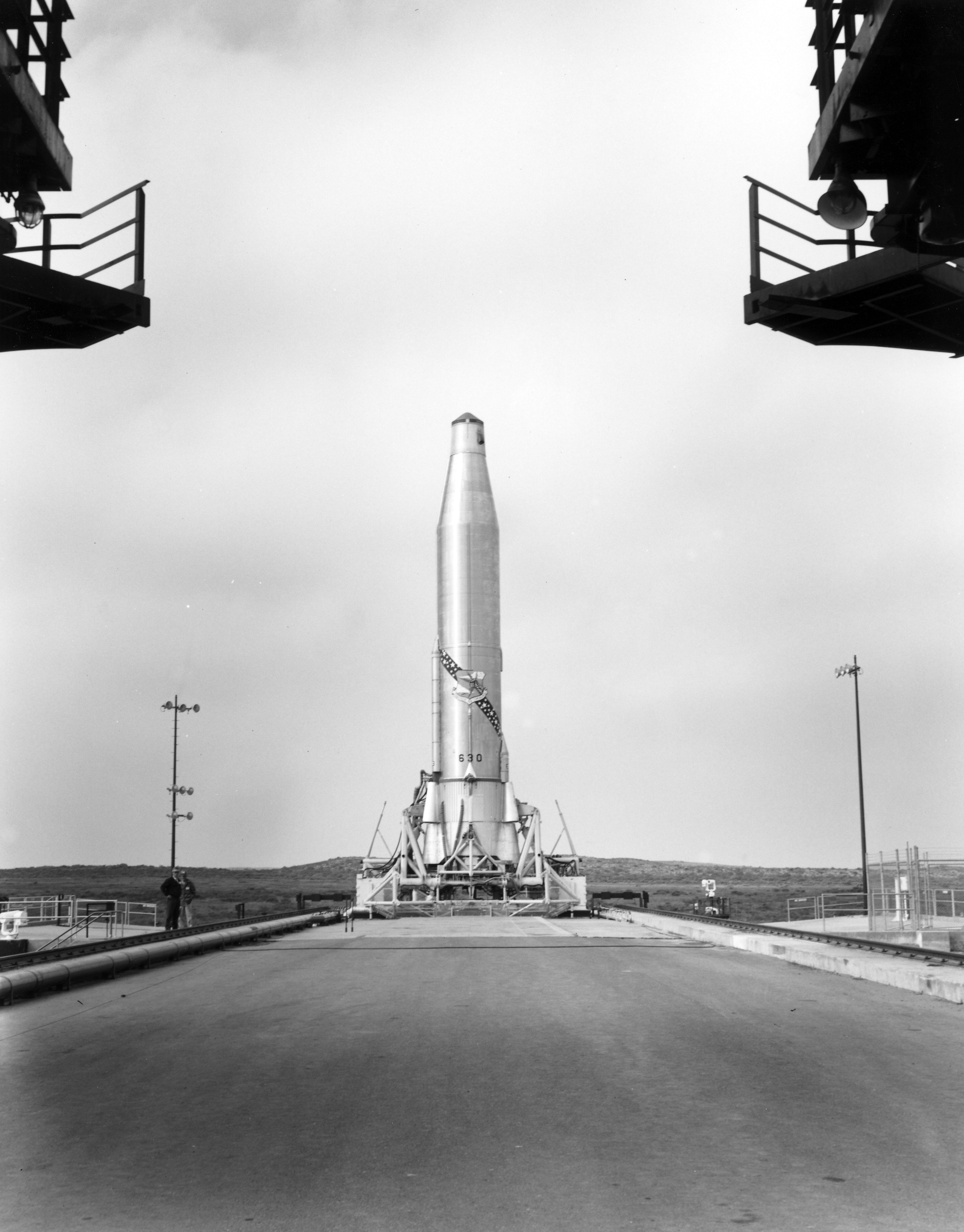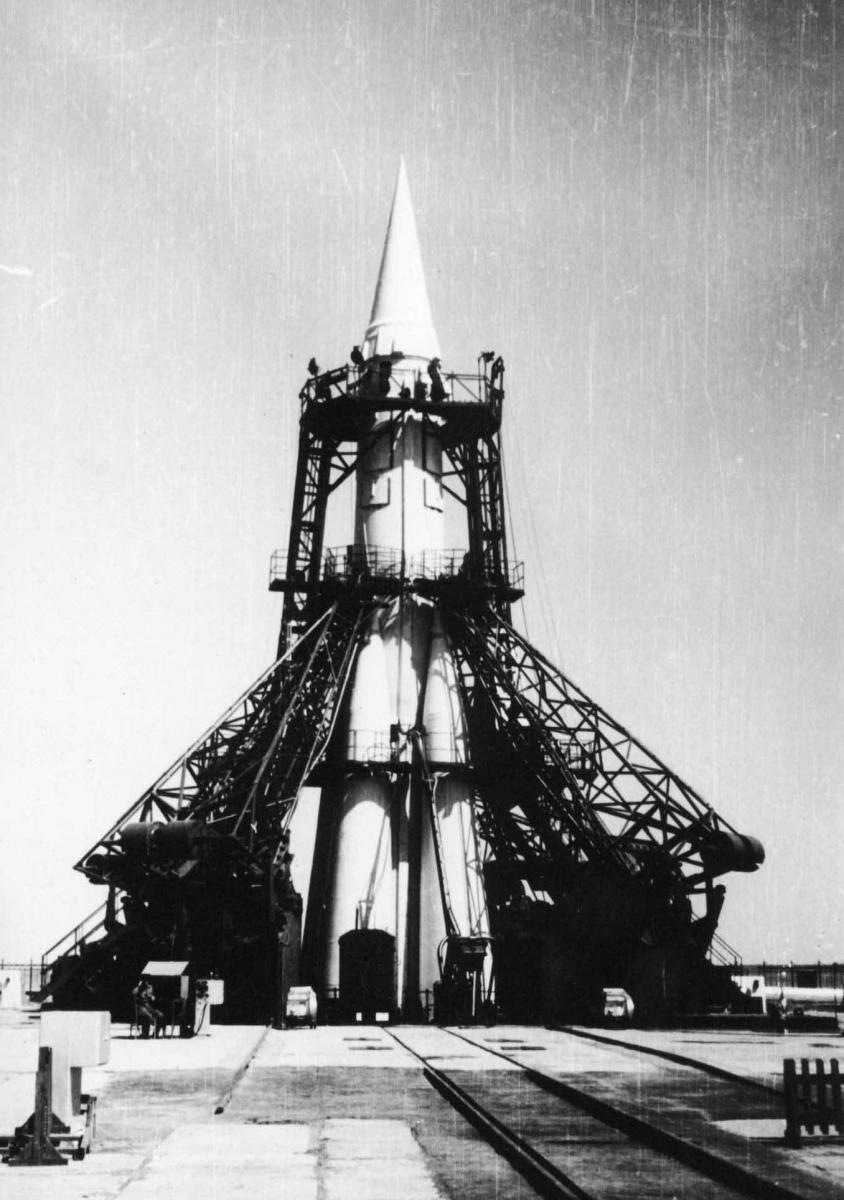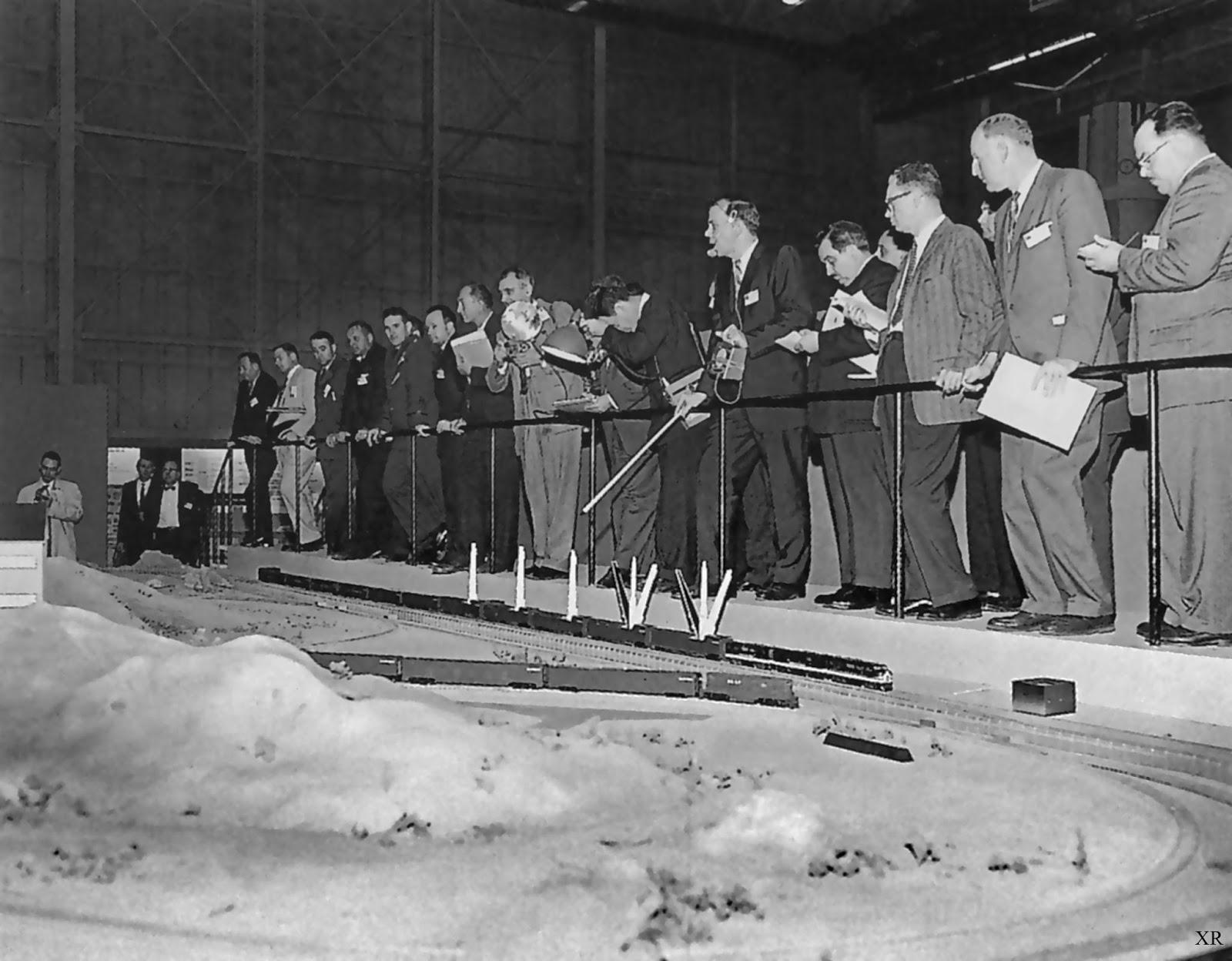The Nuclear Triad: Alternatives from the Days Gone By
SM-62 "Snark"
(votes: 4, rating: 5) |
(4 votes) |
Research Fellow at the Primakov Institute of World Economy and International Relations under the Russian Academy of Sciences, RIAC expert
By virtue of the ‘national selection’, three means of nuclear deterrence asserted themselves as most promising in the early 1960s: land-based ICBMs for the most intensive, powerful and accurate strikes; SLBMs as the most resilient weapon for guaranteed countervalue attacks; and long-range bombers primarily armed with cruise missiles as the most flexible striking element. In terms of deployment, ICBMs quickly shifted from reinforced bunkers to sheltered underground silo launchers.
Decision-makers found the triad’s configuration as it shaped up in early 1960s to be optimal, which rendered its further development fairly conservative, with quixotic ideas being typically left to paper.
When it comes to strategic nuclear weapons, any progress is intertwined not only with the military posture but with global politics and the emerging global landscape as well. There is no arguing that nuclear warheads peacefully resting in armories and missile silos weighed with the decisions made by the U.S. and Soviet leadership no less than party fellows, public opinion polls and pronouncements of foreign leaders.
However, we are now nearing the end of “the stagnation era” in the history of the nuclear triad, which has long been held back by the conservatism of its customers, the arms control agenda and a reluctance to trigger a new nuclear arms race.
The Strategic Arms Reduction Treaty, commonly known as START I, recently marked its 30th anniversary. It came to be the first in a series of nuclear treaties followed by START II, SORT and the New START. The longevity of the arms control regime is not the only reason to single out this landmark date, with one of the other considerations being that the all-familiar strategic nuclear triad, having emerged in the early 1960s, has been under the START framework nearly a half years of its existence. This presents us with a wonderful occasion to throw a glance at the steps that brought us to the triad as we know it as well as speculate about its future.
In the first part of the story, we set out to prove that the way the system of strategic deterrence is organized today was never preordained, which means it could have been completely different. This idea is spot-on today, when the system’s design is undergoing changes yet again.
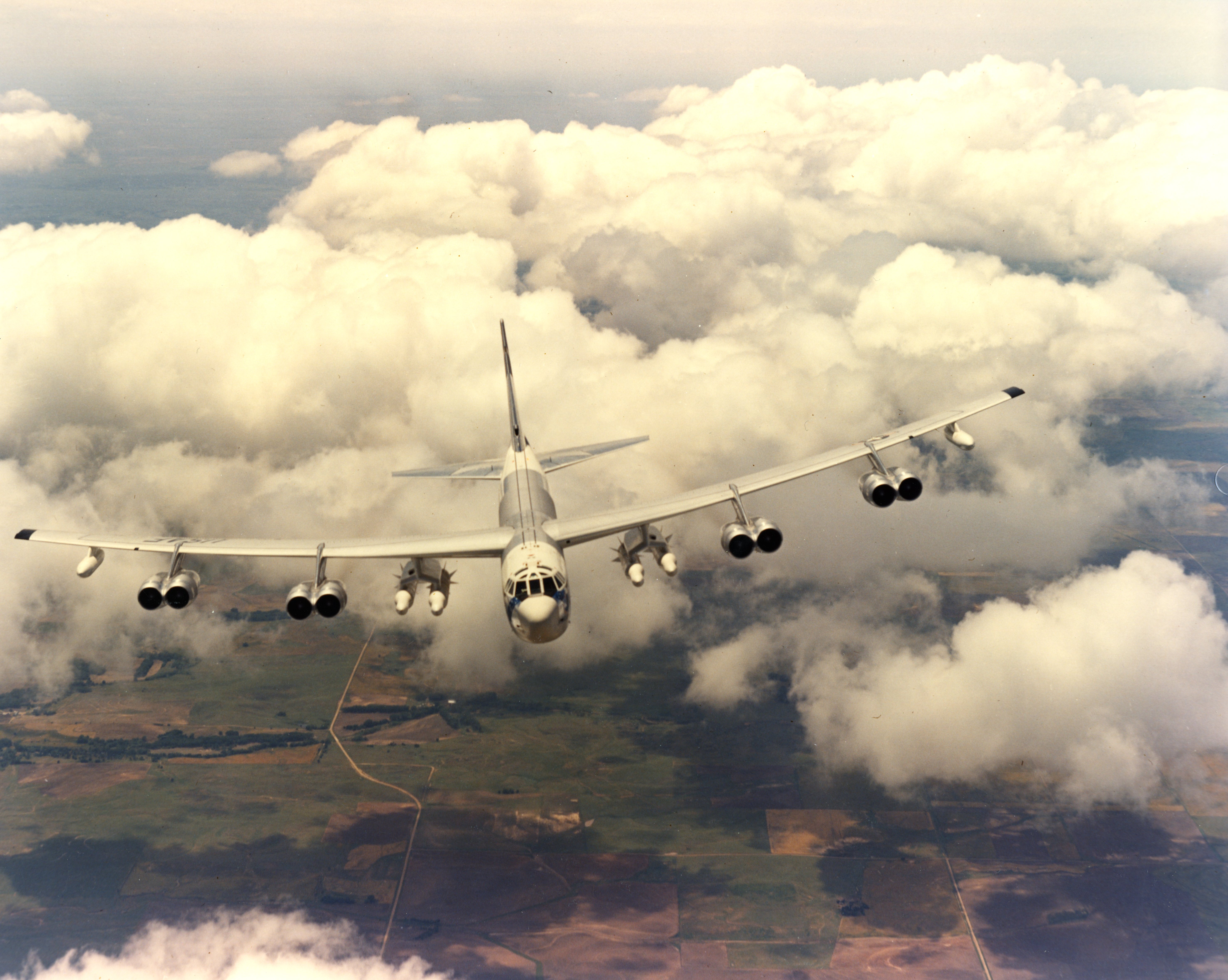
Exploring the Prehistory
The three pillars of the modern strategic nuclear triad—consisting of long-range strategic bombers (LRCMs) chiefly equipped with long-range cruise missiles, land-based intercontinental ballistic missiles (ICBMs) mounted in secure silos, launch tubes or on road-mobile launchers (RMLs), and submarines capable of deploying submarine-launched ballistic missiles (SLBMs)—seem to be a completely natural outcome of our advances in engineering. All nuclear-weapon states possess at least one component of this “package.” Nuclear superpowers, such as the United States, Russia and China, have all the three components (the United States, however, lacks the RMLs), while smaller nuclear states have only some of them. The arsenal of the United Kingdom, for instance, is limited to SLBMs, while that of India includes land-based missiles, mostly of medium range,[1] as well as SLBMs. To some degree, all nuclear powers aspire to emulate the “gold standard” as it set by the United States and the Soviet Union in the course of the nuclear arms race. Some of these attempts seem almost comical, such as when North Korea was keen to rub its success in the face of the United States by naming their first SLBM after the first such missile deployed by the U.S. Navy.[2]
However, the triad’s inception was not immediate. Naturally enough, bombers were the first-choice nuclear delivery vehicles as the first nuclear devices were so large and heavy that the idea of them fitting into something like a large-caliber projectile any time soon was totally unthinkable. Besides, only heavy aircraft could at that time offer the capability of delivering nuclear weapons across many thousands of kilometers, which was the ultimate requirement in the stand-off between the United States and the Soviet Union.
Not so obvious were the next steps in the evolution of nuclear weapons. It took some time and consideration for the military aviation to choose cruise missiles as the primary penetrator of air defense. In the U.S. Air Force, for example, the long-lived AGM-28 “Hound Dog” missile was originally fielded as a provisional solution, while the hopes were put on small air-launched ballistic missiles. The GAM-87 “Skybolt” was designed to become precisely such a missile, allowing B-52 bombers carrying them to strike four targets within a range of up to 2000 km.[3] At the same time, the USSR was designing an air-launched modification of the R-13 (SS-N-4 Sark) SLBM; unlike the U.S., however, where the similar project progressed to the phase of flight trials, the Soviet endeavor remained “on paper” only.[4] To make up for this, the “Raduga” Kh-20 (AS-3 Kangaroo), a Soviet equivalent of the “Hound Dog”, paired with the TU-95K strategic bomber, saw initial fielding as early as 1959, the same year as did the “Hound Dog”.
The U.S. Navy took its time to arrive at submarines as the first-choice strategic weapon, since it was aircraft carriers that were originally designated as the means of delivering strategic nuclear weapons. This task simply required equipping the carriers with airplanes with the necessary flight range and weapon payload. As a stop-gap, the Navy intended to launch the Lockheed P-2 Neptune, originally designed as a land-based patrol aircraft, from larger aircraft carriers. Equipped with jet assisted take-off rocket boosters, these aircraft had a very long flight range but were extremely inconvenient for flight deck operations—putting them in the hangar bay was impossible and meant that they could not land back on the carrier after a strike. Apparently, the Navy felt great nostalgia for the successful Doolittle Raid of 1942, when land-based B-25 bombers took off from an aircraft carrier for an air strike on Japan to ultimately land in China and the Soviet Far East. The first special Heavy Attack Squadron commenced deck training flights in 1949, followed by operational deployment with live bombs in 1951.[5] Powered by two piston engines, the North American AJ “Savage” was specifically designed to carry atomic bombs; however, having a much smaller flight range, it could “barely cope” with the Navy’s nuclear strike mission in the first half of the 1950s.
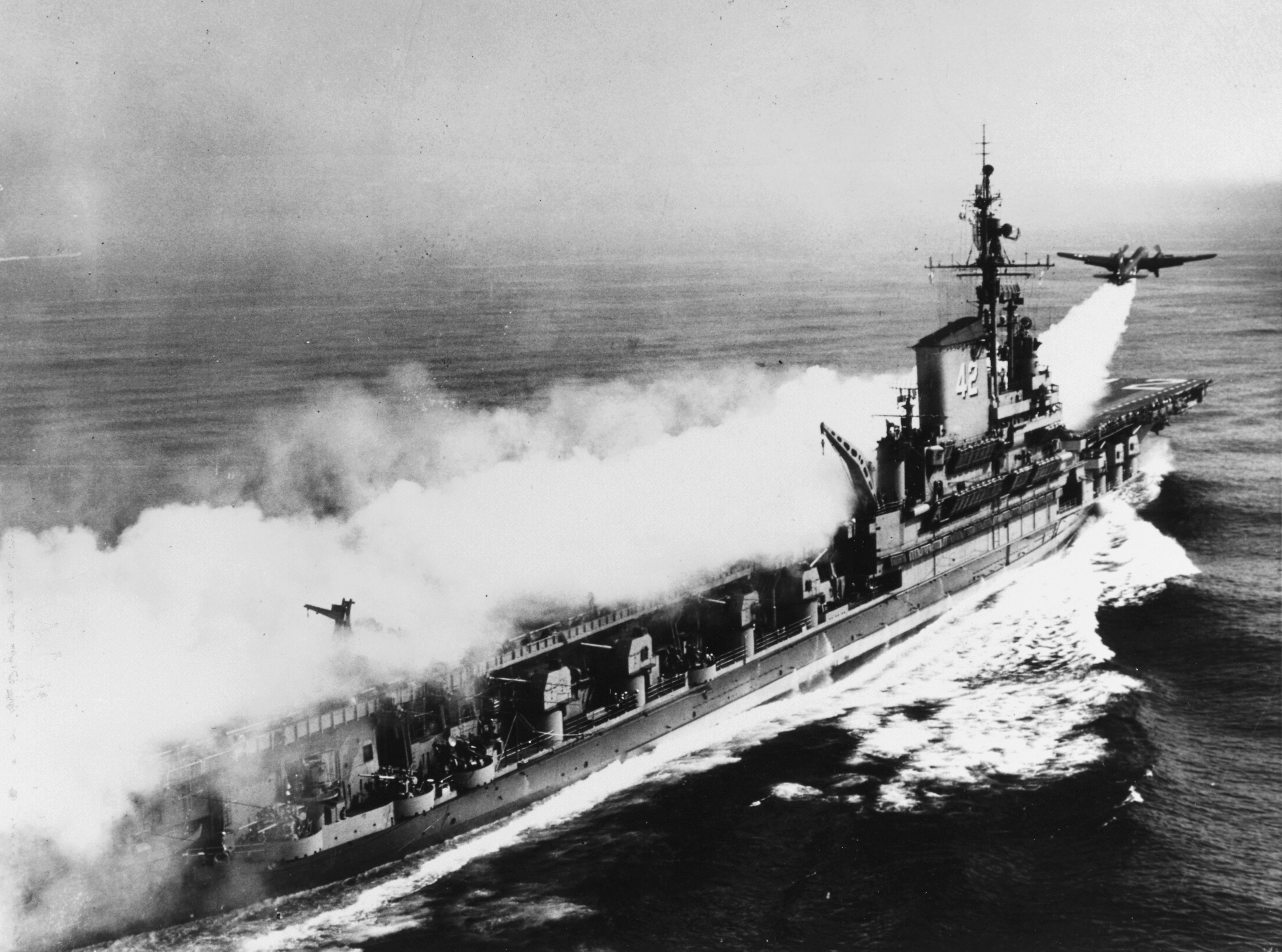
Of course, this was nothing but a stop-gap measure, and it was the United States class carrier that was destined to become the real “strategic aircraft carrier.” The heavy bomber carriers were huge, almost as big as modern Nimitz class warships, with a superstructure-free deck; they were intended as a fitting reply of the U.S. Navy to the long-range bomber armadas being constructed by the U.S. Air Force. The latter, however, proved more effective as they “bombed” these “supercarriers” in the corridors of power to see the program terminated soon after the keel-laying of the first of five ships in 1949. Admittedly, developments in the jet aviation soon let the Navy build effective carrier-based bombers suited to service on the existing aircraft carriers—in the second half of the 1950s, the Douglas A3D “Skywarrior” and the North American A-5 “Vigilante” could be used to carry nuclear weapons, being rather well-suited to the demands at that time.
The U.S. Navy had other, somewhat more “out-of-the-box”, ideas. For example, 1949 saw the concept of the Seaplane Striking Force, a fleet of long-range bomber hydroplanes that were to use support ships at sea or larger hydroplanes—rather than stage airfields—for refueling.[6] Full-scale production of the Martin P6M “SeaMaster” started as early as 1959; however, shortly before the aircraft was ready for fielding, the program was terminated due to budget cuts. Around the same time, the Soviet Union released a limited batch of Be-10 “Mallow” turbojet-powered hydroplanes. It was smaller than the P6M and was later redesigned as the Be-10N, equipped with K-12 nuclear-loaded anti-shipping missiles. The concept behind the Be-10N was reminiscent of that of the U.S. aircraft, although it reflected an additional interest in the ability to destroy the enemy’s carrier groups. As for the “creative” projects carried out by the Soviet Navy, we have to mention the T-15 super-heavy nuclear torpedo that was originally intended as the primary “means of delivery” for the USSR’s first nuclear-powered submarines under Project 627. Quite contrary the myth that emerged from Andrei Sakharov’s memoirs, the Soviet Union far from abandoned the project because the Soviet Navy servicemen suddenly found themselves under a pang of conscience, thus refusing to use the weapon of mass destruction; rather, it was on account of the torpedo being extremely impractical: consider how the “humane” Soviet admirals somehow succeeded in promptly arming the Navy with nuclear missiles at around the same time.
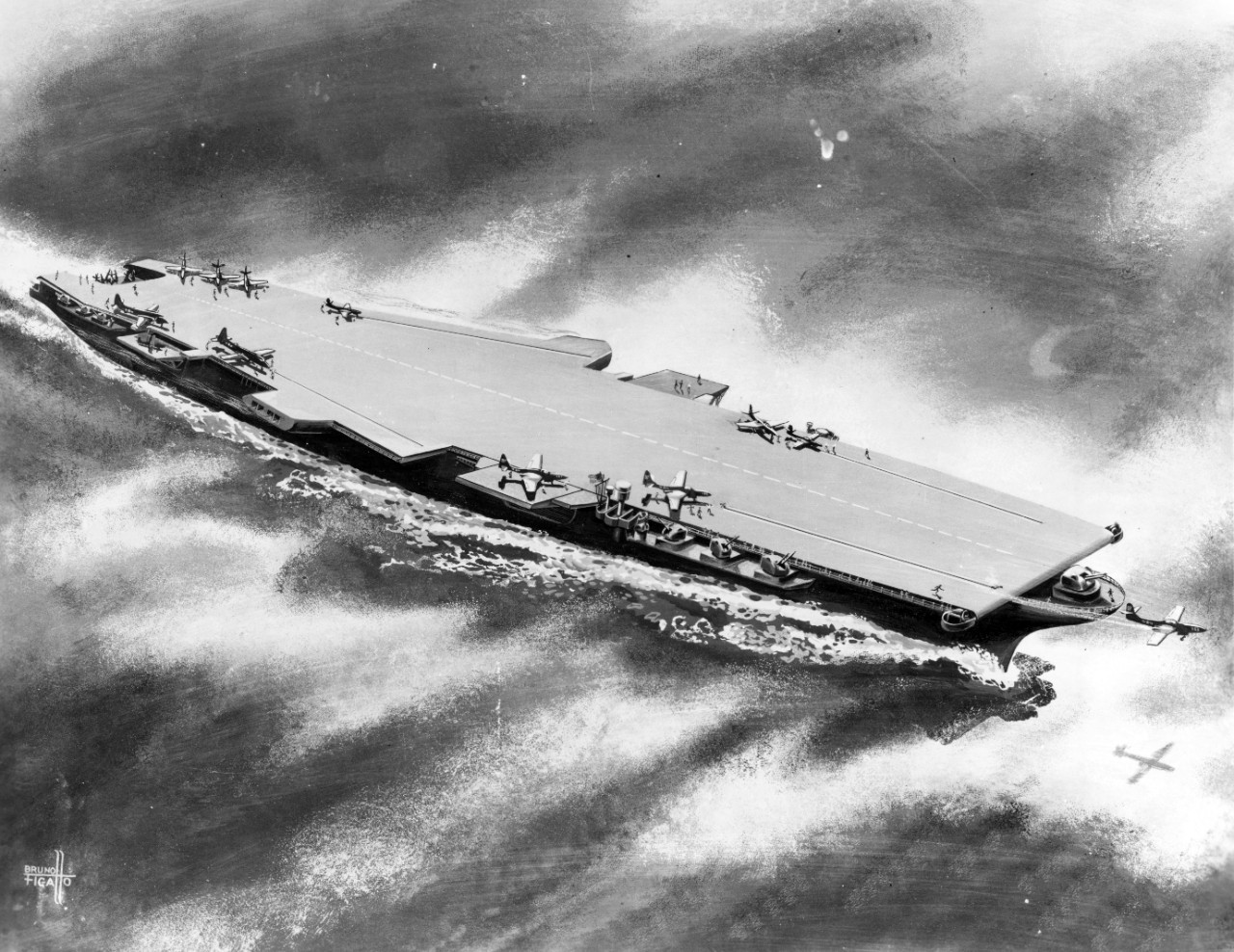
What is more, it was only a matter of years before missile-armed strategic surface combatants could have appeared. The United States was serious about equipping World War II battleships with ballistic missiles, such as the nuclear-tipped PGM-19 “Jupiter”. The USS Long Beach, a nuclear-powered guided-missile cruiser, was built in the late 1950s with deck space to accommodate the mounting of the long-range nuclear-capable SSM-N-8 “Regulus” cruise missiles and was later re-equipped to harbor four launch tubes for the UGM-27 “Polaris”, the U.S. Navy’s first SLBM. In the end, after the cruiser’s commissioning, additional antiaircraft weapons were installed instead.
In the early 1960s, NATO launched a program to set up the alliance’s “joint” naval nuclear forces with surface ships carrying the UGM-27 “Polaris” missiles. The idea was to build missile-carrying ships from transport vessels that would look almost identical to civilian vessels, at least from a distance. The concept was eventually tested on Giuseppe Garibaldi, an Italian light cruiser, whose rebuilding included four launchers for the “Polaris” missiles. The operational tests having concluded, the U.S. never provided the missiles, though. Nor were the “missile-carrying transport vessels” ever built, since the Multilateral Force was never adopted for political reasons, such as a tougher France under Charles de Gaulle, the deteriorating public attitude towards nuclear weapons in the wake of the Cuban Missile Crisis and the transition of the two superpowers to the policy of non-proliferation.
The Soviet Union also had programs to mount ballistic missiles on surface ships, with the closest Soviet equivalents to the MLF could be the “Scorpion” ships (projects 909 and 1111) that would be disguised as transport and hydrographic survey vessels.[7] They were supposed to accommodate eight UR-100M (SS-11 “Sego”) or R-29 “Vysota” missiles. The projects were in the works in 1963–1965; had they actually been constructed, the country’s armed forces could have fielded these ships around the same time with the full-scale fielding of the Yankee class (Project 667A “Navaga”) nuclear-powered submarines. The ships would obviously have been a lot cheaper and easier to operate than the nuclear submarines as well as quite capable of engaging targets on the U.S. soil from sheltered waters washing the Soviet Union, a capability submarines did not acquire until the mid-1970s.
In addition to the idea of converting surface vessels into guided-missile warships, both the United States and the Soviet Union were intending to build long-life missile-hosting submersible platforms or seabed launchers. At the early stage, however, this was prevented by the insufficient range of SLBMs[8] as well as by the inherent for the 1950–60s difficulties of constructing a remote-controlled ultra-reliable unmanned missile system. Later, the interest in such a system dwindled, and February 1971 saw the signing of the Seabed Arms Control Treaty that prohibited the deployment of any such systems outside territorial waters.[9]
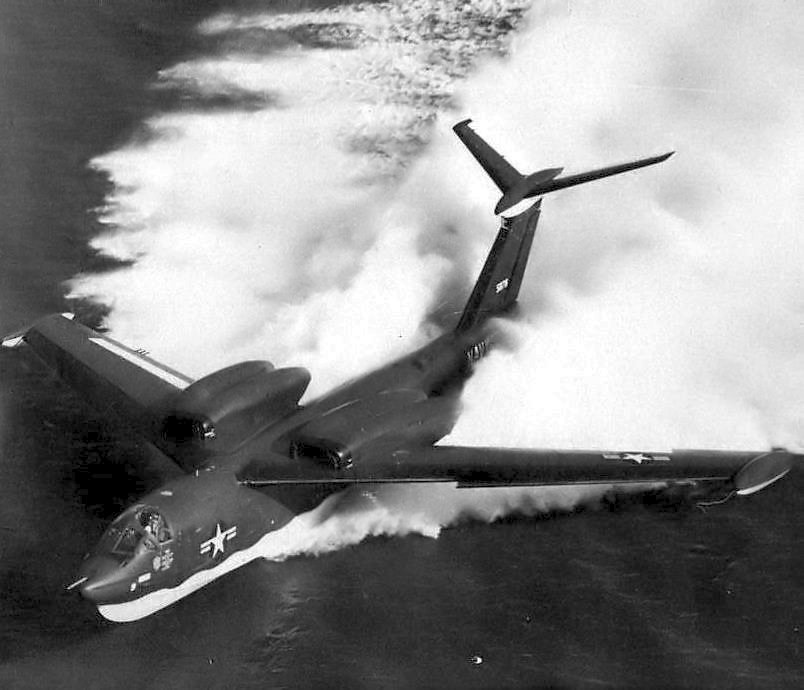
The Martin P6M “SeaMaster” was a 1950s strategic bomber flying boat for the U.S. Navy that almost entered service.
Referring to the periods before and after, we will be talking about “creative endeavors” of the Navy and the Air Forces, the two principal operators of strategic nuclear weapons both in the United States and the Soviet Union—the USSR, though, also had a separate service branch known as Strategic Missile Forces (the RVSN in Russian). This brings us to the brief observation that the Army (i.e., the land forces) was sidelined from any strategic missions in both countries, only receiving plenty of tactical WMDs. We also have to mention Project Iceworm, impressive in its scale, which allowed the U.S. Army to initiate in 1959 the construction of an underground—to be more precise, an under-glacier—military base in Greenland. The United States only managed to get the Danish government to agree in general terms on a permit to build some military facilities on the island in the interests of “NATO’s security”, choosing not to tell Denmark about the plans to deploy 600 nuclear-tipped “Iceman” missiles (a new moniker for the existing “Minuteman”) with an effective range of some 5300 km on the island. The huge project, known as Camp Century, was supposed to be three times bigger than continental Denmark, heated by a nuclear reactor that had already been installed and even launched, with some 11,000 personnel permanently stationed on site under the massive ice sheet. At the time of construction, Camp Century was publicized as a “research facility.”
The intent behind the project was to provide the U.S. Army with its own means of nuclear deterrence. Subject to the division of responsibility with the Air Force, the Army was not entitled for the ICBMs, which is why they chose such an exotic approach to acquiring a reliable and politically convenient method of “reaching” most of the Soviet Union’s territory. The U.S. Army was looking into giving an “alliance-wide” status to the facility in order to set all political considerations aside. In the end, Mother Nature forced the project to be shut down once the Greenland ice sheet was discovered to be constantly moving, making it impossible to build any permanent tunnels in the ice. Construction activities were discontinued in 1963, the reactor was removed from the island, while an expedition that was sent to the site several years later confirmed that the secrets of Project Iceworm had been buried in the depth of the ice sheet. It was only many decades later—when papers on the program were finally declassified—that the public learned about its true essence.
Cruise Missiles: The First Shot
At the dawn of the automotive industry, electric cars were quite a serious competition for gasoline-powered cars. By the same token, cruise missiles went head-to-head with ballistic missiles in the early years of military rocket and missile engineering. While the usefulness of cruise missiles in strategic aviation is rather obvious, you may be surprised to learn that the first nuclear-capable warships were equipped with land-attack cruise missiles and that intercontinental cruise missiles were accepted into service almost concurrently with ballistic missiles.
In the U.S. Navy, the nuclear missile era began with the SSM-N-8 “Regulus” cruise missile. Engineers from Vought, the missile’s manufacturer, managed to build a fairly ordinary vehicle in terms of its specifications for delivering nuclear and, later on, thermonuclear weapons (with device yield up to 2 megatons)—basically, the missile was as good as an unmanned subsonic jet with a range of 960 km to be used as a universal, simple and reliable means of delivery. The missile was found ready for service on surface ships in 1955, and the first ever nuclear-carrying warship, USS Hancock (CV-19), was deployed on combat patrol in December 1955 near the coast of China, when the relations between continental China and Taiwan were experiencing yet another setback.[10] In total, “Regulus” missiles were mounted on four heavy cruisers, ten aircraft carriers and five submarines (on combat duty since 1956), including one nuclear-propelled submarine that took part in combat patrols with the missiles starting in March 1960 to become the first nuclear-capable submarine on military duty.
On the outset, the Soviet Union had a much stronger bias in favor of cruise missiles for the Navy. Although ballistic missile submarines left a bigger imprint on the popular military-technical history—while not always for good reasons: the tragic K-19 nuclear submarine incident was so high-profile that Hollywood made a film starring Harrison Ford under the same name—they were not at the core of the Navy’s nuclear forces until the mid-1960s. The Chelomei Design Bureau succeeded in building an effective cruise missile known as P-5 “Pyatyorka” (SS-N-3C “Shaddock”), intended against large surface targets. It had a smaller range that its American counterpart (maximum 600–650 km), but it flew on autopilot to pre-set coordinates and had a faster cruise speed.[11] On the other hand, it fell far below in the device yield, carrying first 200 and later 650 kilotons. To put these missiles into service, the Soviet Union modernized twelve old submarines (projects 644 and 665) and constructed twenty-one new ones (projects 651 and 659). Shipyards started commissioning these submarines for the Soviet Navy in 1960, and 1963 saw the first of the 29 nuclear-powered cruise missile Project 675 submarines enter service.
Soviet cruise missile submarines were objectively superior to the ballistic submarines of that time. Apart from the very first Whiskey class (Project 644) submarines, cruise missile submarines carried four to six missiles (the Echo-II class even carried eight P-6 “Shaddock” anti-ship cruise missiles!), while the twenty-three Golf class (Project 629) submarines—commissioned at around the same time—were only armed with three R-13 “Sark” ballistic missiles that had an engagement range similar to the P-5 “Shaddock” cruise missile. Admittedly, ballistic missiles were at the time almost impossible to intercept; however, low-flying high velocity aerial targets were hard to kill just as well, especially in the case of a surprise attack.
Surprise attacks were a must, since both missiles could only be launched from the sea surface, and it was not until the mid-1960s that the Soviet Union started upgrading its Golf class submarines to carry the R-21 (SS-N-5 “Sark/Serb”) missiles to be launched from a submerged submarine, while the more powerful Yankee class (Project 667A) submarines that were closer to the U.S. counterparts in their characteristics were only fielded by the late 1960s. Before that, cruise missile submarines were the USSR’s key component of nuclear deterrence at sea—simply given the number of nuclear warheads they could potentially deliver.

A Project 659 (“Echo-I”) nuclear-powered submarine launching a P-5 (SS-N-3C “Shaddock”) cruise missile.
On the ground, cruise missiles were also evolving in parallel with ballistic missiles in the 1950s, chiefly in the tactical domain. In 1954, the United States started deploying their Martin TM-61 (MGM-1) “Matador” cruise missiles in West Germany, followed by deployments in the Far East (South Korea and Taiwan) in 1958.[12] The “Matador” had a decent engagement range (over 1000 km), but their ability to kill targets away from the battle line was limited by the need for radio control during flight, a problem similar to the “Regulus”. This shortcoming was removed in the U.S. Air Force’s next land-based cruise missile, the TM-76 (MGM-13) “Mace”, equipped either with inertial or ATRAN terrain-matching radar navigation system. Despite the extremely primitive method of analogue operation, the ATRAN could still be regarded as the “forefather” of the navigation systems of today. Unlike the “Matador”, which was chiefly fielded in secure shielded launchers, requiring some 28 vehicles in its field battery, the “Mace” was already a fairly mobile system that could be launched from a special transporter-erector-launcher (a Teracruzer), only requiring one support vehicle in addition to the Teracruzer.[13] Deployment of the new missiles began in 1959 in West Germany and South Korea, later they appeared in Okinawa in 1961. Their engagement range was increased to 2400 km (the inertial-guidance modification had an 850-km range in the low-flying mode). By the way, the news that American missile forces operators received a misleading launch command during the Cuban Missile Crisis caused extensive public discussion in 2015 and, in fact, featured the 873d Tactical Missile Squadron stationed in Okinawa.[14]
Around the same dates, on an island off the American continent, Soviet land-based cruise missiles were readied for a retaliatory strike. Along with nuclear intermediate-range ballistic missiles and bombs, the Soviet Union had the FKR-1 (SSC-2a “Salish”) land-based cruise missiles delivered to Cuba as part of Operation Anadyr. Unlike, say, all the R-14 “Chusovaya” (SS-5 “Skean”) intermediate-range ballistic missiles and most of the smaller R-12 “Dvina” (SS-4 “Sandal”) theater missiles, these were ready-assembled and had their nuclear warheads in place. However, their 125-km range would have been insufficient to launch an effective strike on the U.S. soil, and they could only have been used to destroy the Guantanamo Bay Naval Base or staging grounds of the U.S. assault landing forces.
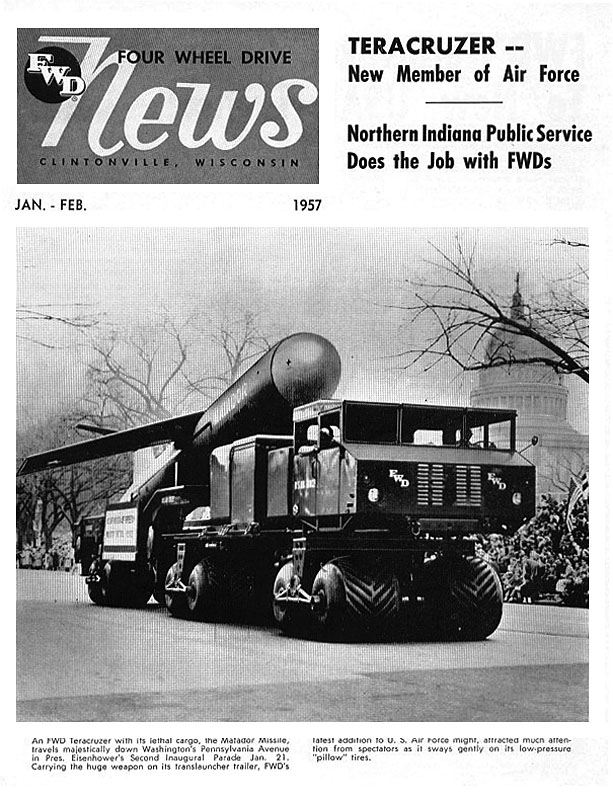
Still, the Soviet Union was designing a number of more impressive cruise missiles, the most famous of which was the “Burya” (La-350) project. The USSR carried out 19 test launches over 1957–1960, of which seven could be deemed successful or partly successful. They demonstrated an engagement range of 6500 km at a more than three times the speed of sound—still, the design specification required the range to be increased up to 7500–8500 km. By the late 1960s, the program, which was proving increasingly promising, was shut down by the country’s political leadership due to the progress with the R-7 “Semyorka” (SS-6 “Sapwood”) missile.
The supersonic SM-64 “Navaho” intercontinental cruise missile tested in 1956–1958 came to be “Burya”’s American “sister.”[15] Notably, however, it was far less successful than “Burya”, with no successful launches and a maximum demonstrated range of a mere 1730 km.[16] Still, it was the United States that had the Northrop SM-62 “Snark”, the only combat-ready intercontinental cruise missile, on standby duty. The U.S. Air Force first received them in 1959 to deploy the missiles in the north-east of Maine, near the Canadian border.[17] In March 1960, the first “Snarks” were placed on regular standby 15-minute alert duty (a total of 30 batch-produced missiles were eventually placed on combat duty).[18] Unlike “Burya” or “Navaho”, the missile never boasted an impressive speed or flight altitude, but its flight performance was on par with an average bomber of the time, with near-sonic speed and a 15-km altitude ceiling. Its engagement range, though, was above 10,000 km, enabling it to engage targets on the Soviet soil with a 3.8 megaton warhead—directly from the missile field, albeit with a depressingly poor precision as the circular probable error exceeded 30 km for long-range launches. By the time the missile was placed on standby duty, however, Soviet air defense systems had been capable of effective interception of such targets, meaning the missile only had a good chance of successful strike if the air defense command and control system had been destroyed by prior attacks by the time the Snark approached the country’s borders. The problem consisted in the lengthy design process. The first air trials began in December 1950—had the missile been completed by the middle of the decade, it could have become a sound alternative to bombers carrying dumb bombs, as well as to the ICBMs that were still waiting to be deployed. This is why the “Snarks” were removed from standby duty as early as June 1961.
Initiated in 1957 to be shut down already in 1964, Project Pluto, a U.S. Air Force program to build a SLAM cruise missile with a nuclear-powered ramjet engine, is also worthy of our attention. The project team built a demo engine that was tested on the ground. For obvious reasons, the program sparked additional interest after the recent disclosure of information about the Russian program aiming to design the “Burevestnik” nuclear-capable cruise missile of an unlimited range. Still, even though little is known about the “Burevestnik”, we can say for sure that it has little semblance to SLAM as the former is relatively small and, as suggested by the airframe design, unable to gain high speed, although using, as we may discover from the previews, a reactor to bypass air defense regions.
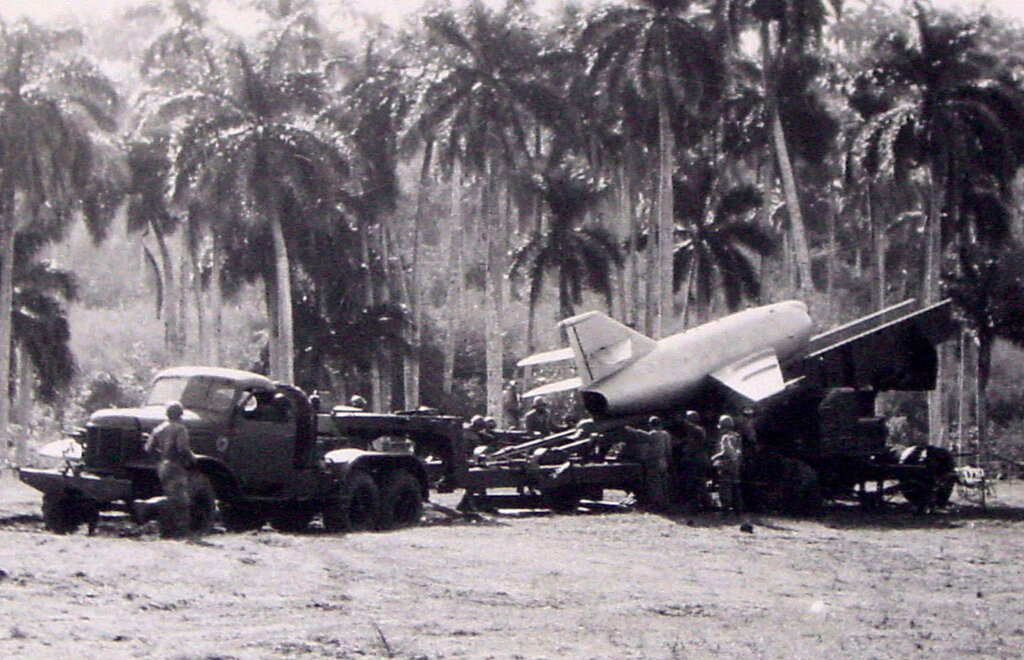
Contrary to that, SLAM was supposed to be a 30-ton ultra-fast—up to Mach 4.2 at high elevation and 3.5 at ultra-low elevation—unmanned bomber-missile carrying up to 26 nuclear bombs to be dropped along the flight path.[19] A large nuclear-powered ramjet engine would be the only way for it to demonstrate the stated flight performance in an intercontinental flight (with spare operational range). Indeed, even if we forget about the propulsion system, it is highly doubtful that anyone would have succeeded in designing and building such an aircraft in the 1960s—at the very least, due to the issues with aerodynamic heating and the control and navigation systems. By the way, Project Pluto’s greatest contribution came as a breakthrough in the design of navigation systems as the United States simultaneously sought to design a navigation system whose principle would later be employed in the BGM-109 “Tomahawk” land-attack subsonic missile and other cruise missiles.[20]
“Civilization is the End of Culture, its Sear and Yellow”
The creative freedoms enjoyed by defense engineers in the 1950s waned with breakthroughs in two areas: the development of ICBMs, which were quickly associated with the emerging field of astronautics; and the development of the first effective SLBMs, most notably the American UGM-27 “Polaris”.
The Soviet and American ICBM programs were marching in lockstep. On August 21, 1957, the USSR conducted the first-ever completely successful ICBM launch, when a prototype of the R-7 (SS-6 “Sapwood”) missile delivered a dummy warhead 5600 km from the launch site. It took the Americans until December 17 of that year to respond with a completely successful launch of the SM-65 “Atlas” prototype, but they were the first to have such a missile fully meet the needs of the military. In September 1959, the first “Atlas” missiles entered combat duty. The Soviet Union placed its R-7 on standby duty in January 1960.[21] This seeming contradiction gives both sides the reason to claim primacy in constructing the first ICBM. Rapid evolution of the ICBMs ensued, and the technology captured the minds of the military and the political leadership in both countries to receive top priority. They were brought to the baseline operational condition before intercontinental cruise missiles, which is the reason why programs like “Burya” and “Navaho” were soon terminated. The potential benefits of such an approach highlighting cruise missiles was not obvious at the time.
An even more intensive “clean-up” of cruise missile projects was driven by the unprecedented success of the UGM-27 “Polaris” submarine-launched ballistic missile: in virtually no time (approximately four years), engineers from Lockheed could build a solid-fueled missile whose overall performance was way ahead of its time and that was perfectly suited to submarine service. In July 1960, USS George Washington (SSBN-598) conducted the first missile launch from a submerged submarine, with the submarine taking part in its first combat patrol mission with a full load of 16 missiles as soon as November 15, 1960. To field these missiles, the United States built 41 SSBNs of five different classes before 1967, which served as the primary naval component of the U.S. strategic nuclear forces until the early 1980s, when the Ohio class submarines started to enter service.
In the Soviet Union, the first Yankee class (Project 667A) submarines with equivalent weapon systems were not delivered to the Navy until late 1967. Like before, these were armed with liquid-fueled missiles as the USSR was for a long time lagging behind in the development of solid-fueled missiles. The country’s first high-volume solid-propellant SLBM was the R-39 (SS-N-20 “Sturgeon”) that would appear in the 1980s, and its weight and size required that the USSR design and build the world’s largest submarines, the Typhoon class (Project 941 “Akula”).
The “Polaris” caused such a stir in the United States that the U.S. Navy attempted to get the matters of strategic deterrence exclusively transferred to its remit. The only way the U.S. Air Force managed to hold its grounds was through reasoning that ICBMs would be a cheaper solution (especially as far as “the cost of number of devices on permanent duty” goes, as it is a mere one out of three to four submarines at best that is carrying out the combat patrol mission at any given time), and they would see an easier increase in their throw weight and accuracy as well as a higher operational flexibility. This, as well as the potential of ICBMs being used in counter-force strikes, fit well into the “flexible response” strategy that was formulated by the newly elected John F. Kennedy and his administration.
Still, budget constraints left many programs overboard. The Navy had to give up on long-range carrier-based bombers and hydroplanes and on equipping surface ships with ballistic missiles; cruise missiles were soon decommissioned. The Air Force faced certain challenges with testing the Douglas GAM-87 “Skybolt”, an air-launched ballistic missile, on its early stages and failed to obtain the required funding to whip the missile into shape. The situation with “Skybolt” even triggered a “diplomatic crisis”, since the missile was developed in cooperation with United Kingdom as a projected weapon for their long-range bombers. J.F. Kennedy resolved the conflict by concluding what is known as the Nassau Agreement in December 1962, whereby the United States committed to lend assistance to its key ally in building SSBNs as well as supply the UK with “Polaris” SLBMs. This agreement clearly came to define the future of Britain’s strategic nuclear forces—until this day, they are made up of submarines built with the aid of the United States and carry U.S. missiles,[22] while prospective SSBNs of both countries will have an identical design of the missile bay.
By virtue of the ‘national selection’, three means of nuclear deterrence asserted themselves as most promising in the early 1960s: land-based ICBMs for the most intensive, powerful and accurate strikes; SLBMs as the most resilient weapon for guaranteed countervalue attacks; and long-range bombers primarily armed with cruise missiles as the most flexible striking element. In terms of deployment, ICBMs quickly shifted from reinforced bunkers to sheltered underground silo launchers.
However, as early as 1958, the U.S. Air Force launched a program to build rail-mobile systems (missile trains) carrying solid-propellant “Minuteman” missiles as a cheaper yet mobile and robust alternative to the Navy’s “Polaris”.[23] The program was terminated in December 1961, as the United States ultimately opted for deploying missiles in silos—this was cheaper, allowing to produce more missiles for the same price, and could guarantee greater accuracy and faster command-to-launch time.[24] These aspects were of higher priority to the United States, whose strategic forces were mostly built for counter-strikes, although later they would repeatedly return to mobile missile systems. In the early 1990s, the end of the Cold War would be the only thing that prevented the deployment of a missile train carrying heavy LGM-118 “Peacekeeper” ICBMs and a wheel-mounted mobile ground missile system (MGMS) carrying light MGM-134 “Midgetman” ICBMs.
The Soviet Union attached more priority to retaliation strikes—such as when the command to launch missiles is only given after confirmed nuclear blasts on its soil—which explains why Moscow focused more on the survivability of the ground component of its strategic nuclear forces, being far more skeptical about the reliability of SSBNs as compared to the United States on account of the obvious imbalance in the capabilities of the Navies and basing systems. Endeavors to design a mobile ground-based system resulted in the siting of the world’s first mobile ground complex, the RT-21 “Temp-2S” (SS-16 “Sinner”), in 1976. Designed at a time of détente, the system was produced on a small scale for political reasons, but the engineering experience helped the USSR build the RSD-10 “Pioneer” (SS-20 “Saber”) and the RT-2PM “Topol” (SS-25 “Sickle”) systems later on. It is safe to say that today’s RS-24 “Yars” (SS-29) is the direct descendent of the “Temp-2S”. A missile train with the RT-23 “Molodets” (SS-24 “Scalpel”) heavy missile was placed on full combat alert in 1987; it was produced on a small scale and removed from service in the early 2000s once the guaranteed service life of the missiles, as well as that of their silo-based modifications, expired.
Decision-makers found the triad’s configuration as it shaped up in early 1960s to be optimal, which rendered its further development fairly conservative, with quixotic ideas being typically left to paper. The only brand-new types of strategic delivery systems that entered service in the 1980s—apart from the Soviet mobile ground missile systems—were the compact low-altitude cruise missiles. Strategic aviation and submarine forces soon began to convert to such missiles, and while this clearly was a substantial leap in capabilities, with one missile bomber now capable of attacking as many as twenty targets from a safe distance, this was more of an evolution of the missiles from the early 1960s. In fact, this could have happened sooner had more thought and attention been given to this field.
Payload of both ground-based and sea-launched ballistic missiles evolved as well, mainly through miniaturizing the warheads and improving their accuracy. Besides, improved accuracy made it possible to reduce their yield so that today’s warheads are usually ten times “weaker” than they were in the early 1960s. Until recently, the biggest revolutionary breakthrough had been the emergence of the multiple independently targetable reentry vehicle (MIRV). Other potential breakthroughs, including a conversion to fractionally orbital—the Soviet Union had a small number of these on pilot duty—and guided reentry vehicles, eventually fell through.
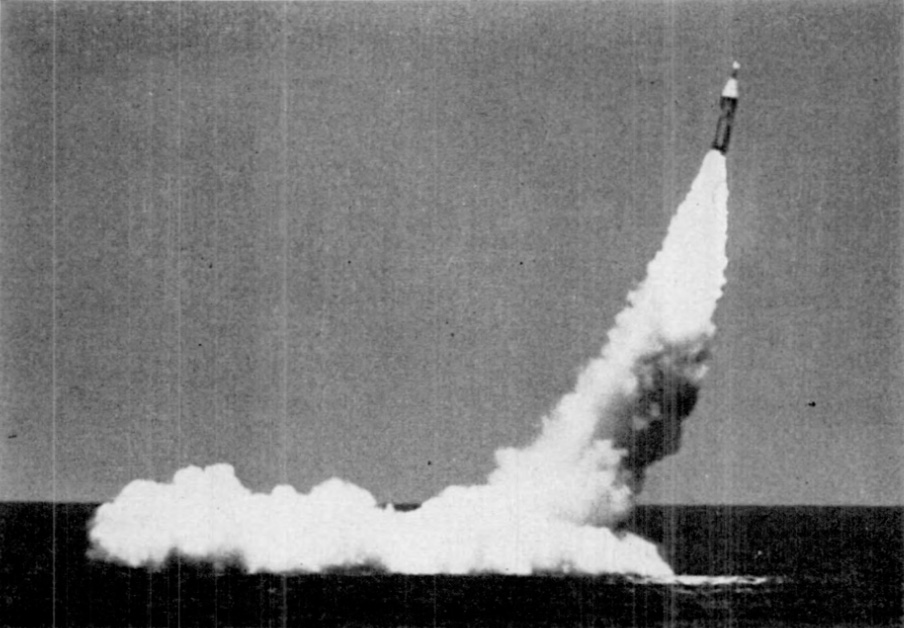
However, we are now nearing the end of “the stagnation era” in the history of the nuclear triad, which has long been held back by the conservatism of its customers, the arms control agenda and a reluctance to trigger a new nuclear arms race. Discussing the challenges that the classic triad faces today, in the wake of technological progress, is a matter for another article.
For now, let me just cite the reason why this account of technological innovations made over half a century ago has been so long. The vivid examples have been provided to demonstrate how advances in weaponry are not pre-determined; rather, they are often sporadic and depend on trivial things. When it comes to strategic nuclear weapons, however, any progress is intertwined not only with the military posture but with global politics and the emerging global landscape as well. There is no arguing that nuclear warheads peacefully resting in armories and missile silos weighed with the decisions made by the U.S. and Soviet leadership no less than party fellows, public opinion polls and pronouncements of foreign leaders.
Bearing all these examples in mind, what could the triad’s alternative history have been?
— Had the United States failed to design the “Polaris” so quickly and effectively, many other systems would likely have received funding. The Navy would have had to keep developing carrier-borne aviation for strategic strike missions, while resource shuffling would—with all probability—have made it less effective in local conflicts, such as the upcoming Vietnam War. The evolution of cruise missiles would probably have allowed for effective attacks on coastal targets, although the Navy would overall have retained a secondary role. Sooner or later, an effective SLBM would inevitably have been designed; though, by this time, its “alternatives” could have found their niches to gain some foothold. Carrier strike groups with long-range hydroplane missile bombers could thus have been a rather realistic scenario.
— The U.S. Air Force could have had the opportunity to tune up their air-launched intermediate-range ballistic missiles, which would quite likely have made the situation a lot more aggressive and tense as the Soviet leadership—subsequently, the American leadership as well, since the USSR would have tried to build an equivalent of its own—would have had to find themselves under constant fear that an attack on Moscow could only be a matter of minutes, with another aggravating factor being the virtual impossibility of getting Soviet fighter jets to patrol the airspace of Norway, unlike the case of anti-submarine warfare.
— Had the GAM-87 “Skybolt” been successful, the UK would presumedly be far less reliant on the U.S. for its nuclear policy, as getting Britain’s strategic nuclear forces incorporated into NATO’s “joint” forces was part of the Nassau Agreement. Without the argument that submarines would guarantee retaliation while not “attracting” enemy missiles to targets on the British Isles, the anti-nuclear movement in the UK could have forced the government into decommissioning all nuclear weapons in the country once the Cold War ended.[25]
— Had the Cuban Missile Crisis never happened and had the American administration retained its interest in proliferating U.S.-made nuclear weapons among its allies, then Russia’ы Foreign Ministry would now be ranting about NATO Joint Nuclear Missions being a group of allied ships with nuclear missiles onboard making occasional patrol missions rather than a hundred tactical aviation bombs that essentially make no sense from the military perspective. Alternatively, Joint Nuclear Operations could feature some outdated trains roaming across Europe armed with intermediate-range missiles.[26] Otherwise, Greenland could have become what would today be regarded as NATO’s nuclear stronghold with a multinational garrison charged with operating the U.S. missiles.
— An emergence of full-fledged multinational nuclear forces under the auspices of NATO would have inevitably disabled the non-proliferation regime as we know it today. One of the basic tenets of today’s geopolitics could have been impossible for the sole reason that one man, Charles de Gaulle, had had better relations with the United States or if Greenland’s ice sheet had a different nature. These are all fairly random variables in the equation whose outcome (self-evidently?) tells us how many nuclear states we have in the world.
— Designers of intercontinental cruise missiles could have seen more successes and luck, while the designers of ballistic missiles would have experienced more setbacks. Had “Burya” been ready for deployment well before the R-7 (SS-6 “Sapwood”), chances are that Soviet leaders would have initiated the construction of the missile in case of a dire need. The same applies to the United States. Effective ICBMs would eventually have been built, but it would have taken longer with less funding. In addition to altering the approach to nuclear exchange at an early stage, it would have affected space programs that basically lived on defense left-overs early in their history.
— The United States may well have preferred mobility over strength to commence building missile trains in the early 1960s. They came very close to this, even establishing the would-be strategic railway missile wings.[27] How would the U.S. nuclear posture have changed if the triad’s ground component relied on a smaller number of missiles that would, in turn, be more fail-safe? The United States could then have had its posture revolve less around counter attacks, rather leaning more towards retaliation. In this case, missile trains may well have been coupled with unexpected consequences—for example, the United States could have had a much better railway infrastructure today as rail support efforts were considered to be one of the “pros” in favor of the mobile solution. This would have been similar to the Soviet Union where many thousand kilometers of track were renovated for an extremely limited missile train program. This is a sort of a “butterfly effect” that we are dealing with here: in the early 1960s, a group of generals and political leaders decided that “the more missiles, the merrier” but, fast forward to the 2020s, the United States, being among the world’s most well-off nations, has no high-speed rail line at all.
We could envision more scenarios like these, but it is much more important to look into the future while building on the experience of the past, cognizant of its uncertainty. The growing number of problems, opportunities and challenges in the field of strategic weapons will be addressed in the next article.
1. For obvious geographic reasons, missiles with an effective range below 5000 km would be enough for India as a strategic weapon of deterrence against China, its most serious potential adversary. Agni-V, the first missile that likely falls within the classic U.S.–Soviet definition of an ICBM, has only recently started to enter service, with the number of missiles deployed being fairly small.
2. The name spells “Pukkuksong” (북극성) to be rendered as the Polar Star—the first U.S. SLBM was named Polaris, a corresponding derivative from Latin conventional for the English language.
3. All the B-52H modifications of the B-52 bomber currently in service in the United States were manufactured throughout 1961–62 specifically to carry this missile.
4. M. A. Kardashev, Prohibited Strategic Weapons (Novoye Vremya, 2019), 101.
5. Tommy H. Thomason, Strike from the Sea: U.S. Navy Attack Aircraft from Skyraider to Super Hornet 1948–Present (Specialty Press, 2009), 46–54.
6. Thomason, Strike from the Sea, 73.
7. M. A. Kardashev, Prohibited Strategic Weapons (Novoye Vremya, 2019), 26–28.
8. The platforms would have to be deployed on the high seas rather than in coastal waters, which would produce a constant headache in terms of ensuring their security.
9. Official title: Treaty on the Prohibition of the Emplacement of Nuclear Weapons and Other Weapons of Mass Destruction on the Seabed and the Ocean Floor and in the Subsoil Thereof.
10. Bill Yenne, The Complete History of U.S. Cruise Missiles: From Kettering’s 1920s’ Bug & 1950’s Snark to Today’s Tomahawk (Specialty Press, 2018), 60–68.
11. This could be regarded as an advantage, as the “Regulus” had a radio-command guidance system. Without some extra tricks (such as command ships positioned closer to the target, since more submarines were equipped with command and control systems than with missiles; missile guidance from airplanes that was being tested), it limited the engagement range to only 415 km. In this case, a somewhat higher precision is cold comfort, because we are talking about potential target deviation in both cases being at least a couple of kilometers.
12. Yenne, The Complete History of U.S. Cruise Missiles, 43–50.
13. Yenne, The Complete History of U.S. Cruise Missiles, 53.
14. It should be mentioned that the veteran’s story–the entire narrative is based on an interview with just one man–drew a serious rebuke from experts and other missile force operators, including the veteran’s contemporaries. However, since then, no substantial evidence has been published to support or refute the fact that somebody gave a misleading command, and the details of this story (for example, when the narrator took his pistol and threatened to kill any of his fellow officers if they tried to execute the command) can be explained by the narrator’s appetite for drama.
15. The programme was terminated in the summer of 1957, but some of the missiles produced were later used for research trials and to test certain engineering solutions. The experience of building the “Navaho” missile proved useful for a quick design of the AGM-38 “Hound Dog” air-launched cruise missile.
16. Yenne, The Complete History of U.S. Cruise Missiles, 77.
17. Yenne, The Complete History of U.S. Cruise Missiles, 80–89.
18. The approach to the standby duty of these missiles offer an interesting insight into how U.S. defence officials viewed the potential for nuclear war at the time: a total of five missiles were stored in each reinforced hangar with a launcher; the first missile was ready for launch within 15 minutes of receiving the launch command, the second one 15 minutes later, the third four hours after the command, the fourth within three days, and the fifth within five days (apparently, the last two missiles were kept disassembled).
19. Despite what the media commonly suggest, the exhaust produced by its nuclear engine was not a weapon as such, and its effects were expected to be fairly mild.
20. Yenne, The Complete History of U.S. Cruise Missiles, 89
21. The design of the Soviet missile, unlike the American one, did not make it possible to keep a number of missiles on permanent launch alert. As for the “Atlas”, the engineers managed to achieve permanent readiness of one of three missiles during the very first deployments.
22. What is more, the United Kingdom even chose not to buy the modern “Trident” SLBMs. Instead, they have agreed on a pool of these missiles within the U.S. arsenal, so British submarines travel to the United States to reload.
23. Steven Pomeroy, An Untaken Road: Strategy, Technology, and the Hidden History of America's Mobile ICBMs (Naval Institute Press, 2016), 66–69.
24. Pomeroy, An Untaken Road, 98–99
25. Britain’s last air-borne nuclear weapon, the WE.177 tactical bomb, was removed from service in 1998, with the last U.S. nuclear weapons withdrawn in 2006. It may well be that the United Kingdom is the only nuclear state whose arsenal features only one type of nuclear weapons.
26. In April 1960, the United States proposed deploying in Europe a missile train with a hundred “Polaris” missiles that was well-suited for the purpose as one of the potential scenarios for NATO’s joint nuclear forces. Charles de Gaulle supported this plan provided that a third of the missiles would be handed over to France as the sole and independent operator. The United States expressed no interest in this counter-proposal. A. V. Zinchenko, France’s Nuclear Policy (URSS, 2010), 110–111.
27. Pomeroy, An Untaken Road, 99.
(votes: 4, rating: 5) |
(4 votes) |
We are witnessing the dawn of a new era in our nuclear world
A Year Without the INF Treaty: You Need an Umbrella During Rainy SeasonEven if the political clouds are miraculously dispersed and the New START is revived in the coming months, it would not do much to bring back the Soviet-American model of arms control that took shape almost half a century ago
The revolutionary START Turns 30: Assessments and ProspectsComments by Andrey Baklitskiy, Victor Esin, Olga Oliker, Alexander Saveliev and Dmitry Stefanovich


